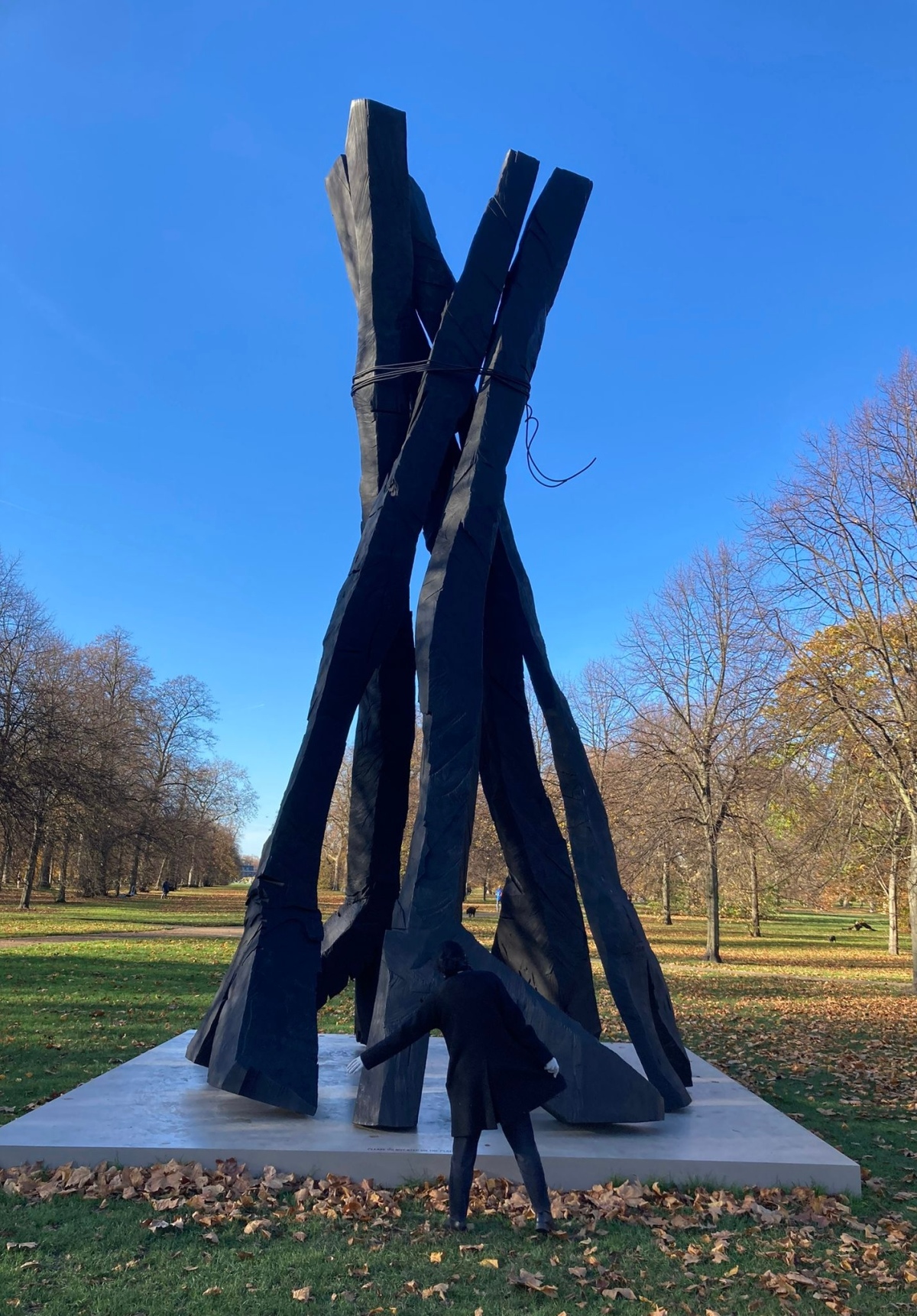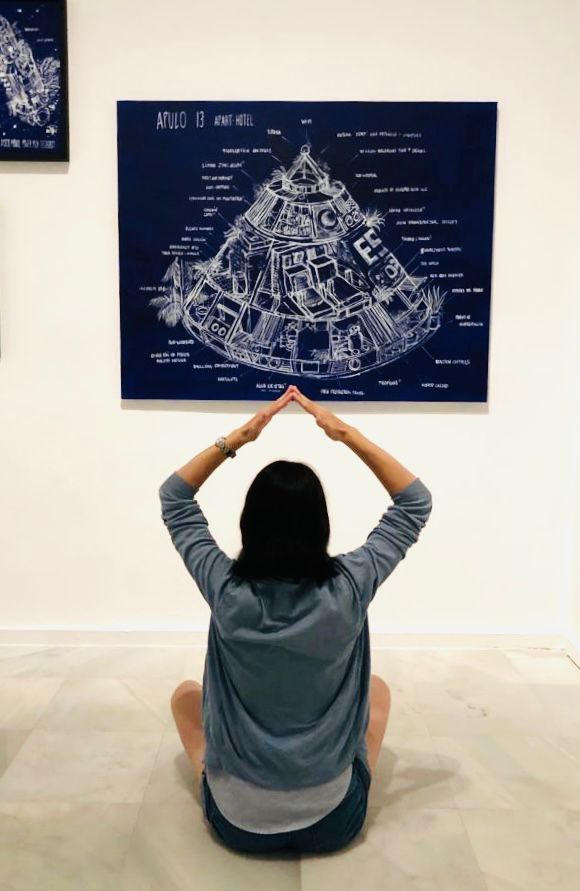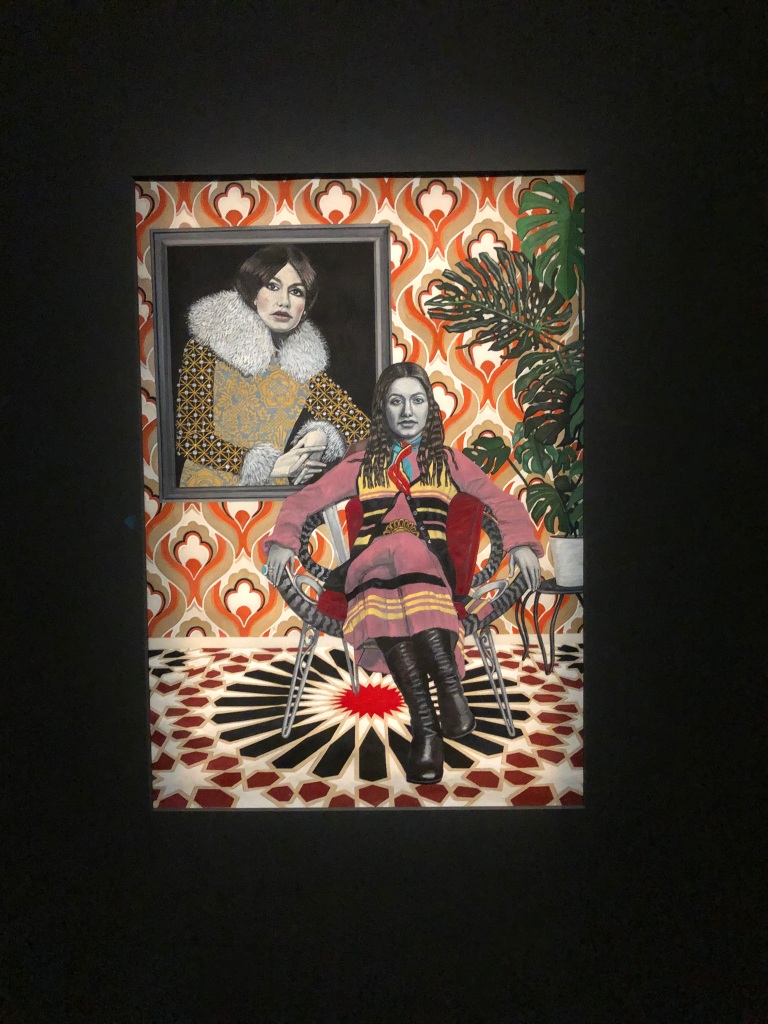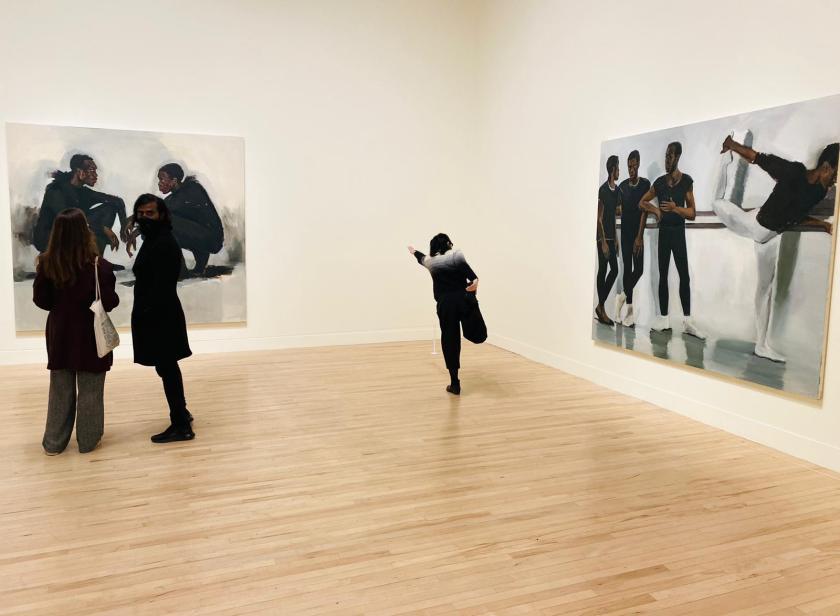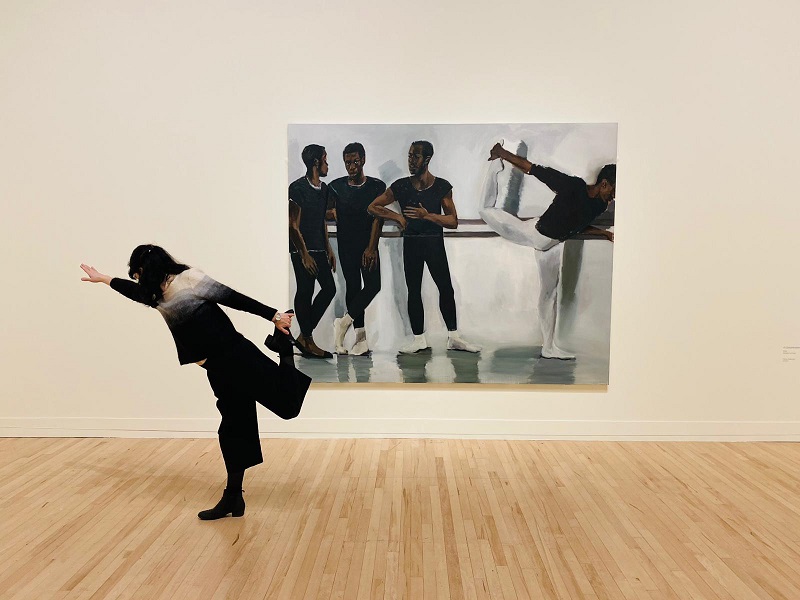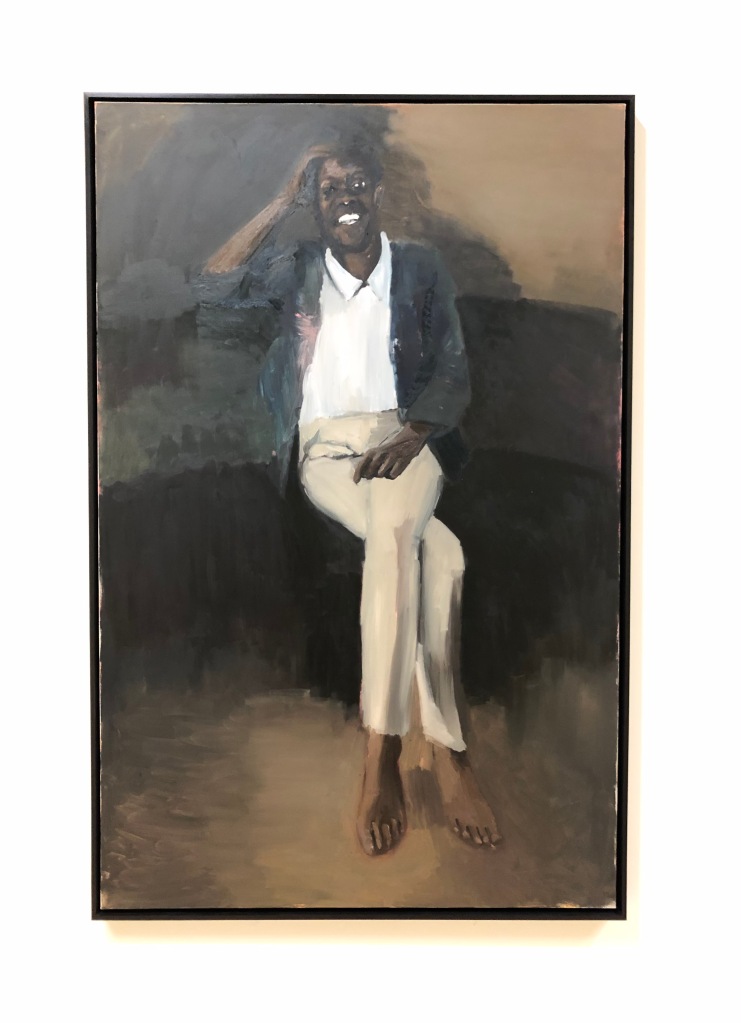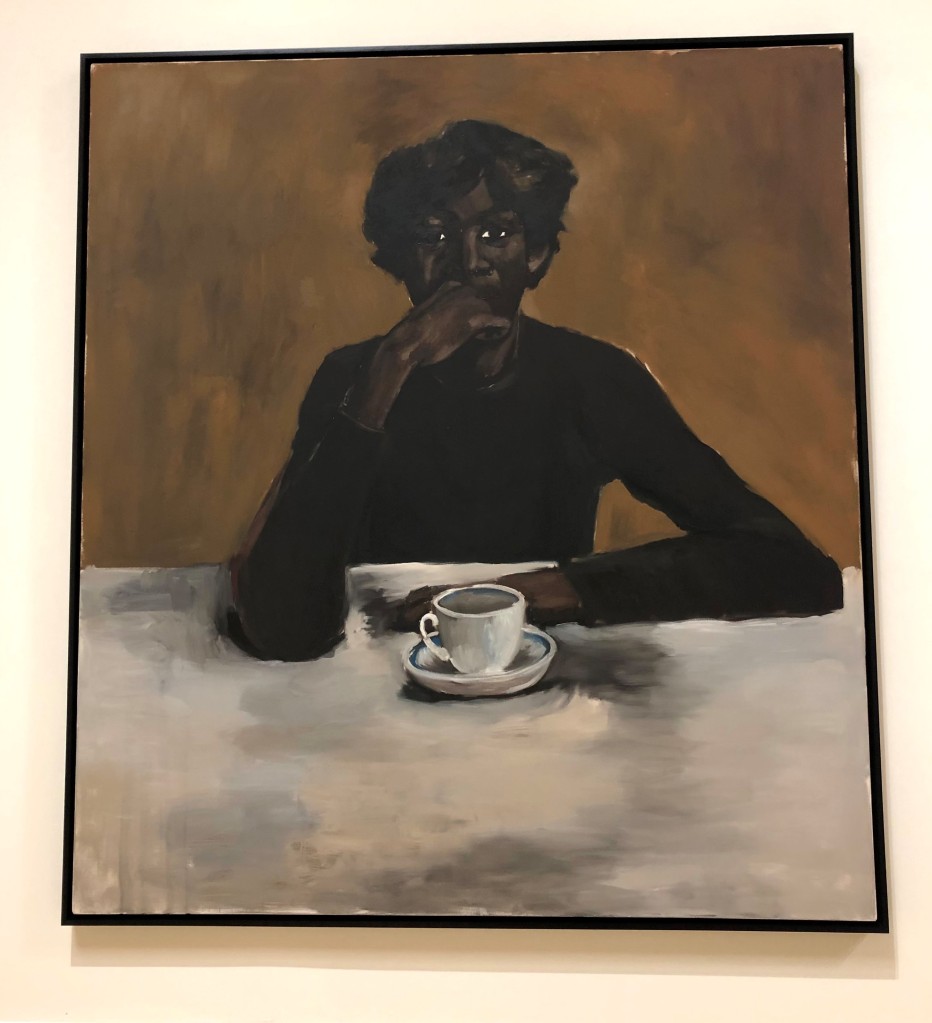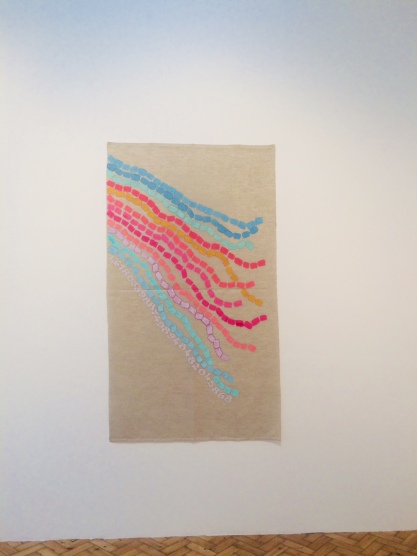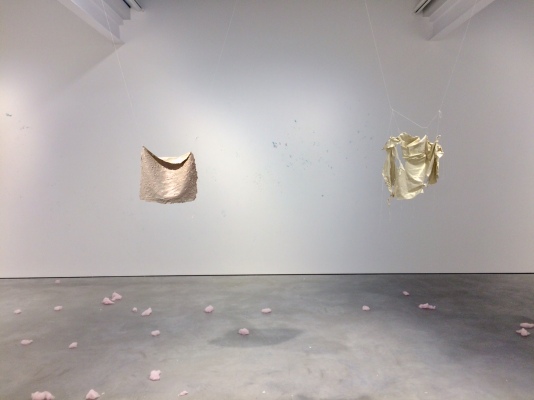The Serpentine South gallery currently showcases German artist Georg Baselitz’s work, available for viewing until tomorrow. Hurry to discover some of his latest pieces – created between 2011 and 2015 – reflecting on history, personal life, and childhood memories, modeled on himself and his wife Elke.
The visit felt to me like a visit to the artist’s studio, especially if you know that the ten timber sculptures in this art exhibition were not originally intended for public view. They were made as models, in preparation for bronze works. Each wooden sculpture is made from a single tree trunk, which Baselitz carved down using power saws, axes, and chisels. His solid, impactful figures retain the texture of timber, with distinctive incisions and notches across their surfaces.
Surrounded by the trees of Kensington Gardens, the venue complements the sculptures, evoking their original living forms in the forests of Saxony. The exhibition invites you into a forest of raw, timber sculptures, offering insights into Baselitz’s process and highlighting connections between his drawings and sculptures across different mediums. The accompanying drawings are not preparatory sketches but were created during the sculpting process.
There’s enough space within the gallery for visitors to walk freely around the huge artworks and engage with the performative side of sculpture, as we enjoyed doing, and you can see in the photos below. One of the most memorable works in this exhibition is “Zero Mobil”, a big timber sculpture suspended from the ceiling with a skull motif exploring themes of time, mortality, and the fragility of life.



Georg Baselitz (b. 1938, Saxony, Germany) first came to prominence in post-war Germany as a painter. From 1969 onwards, he has been known for turning upside down human forms and other motifs in an attempt to disrupt pictorial conventions. Turning figures upside down also invites abstraction and offers a fresh perspective on the world.
With a career spanning over six decades, Baselitz is one of the most prolific artists of his generation. He has also been one of the most controversial, with his early background fundamental to understanding his artwork. Born Hans-Georg Kern in Deutschbaselitz in 1938 in what later became East Germany (in 1958, he fashioned his name after his birthplace), the young Baselitz grew up in the immediate aftermath of World War II. According to the curator of the exhibition, Tamsin Hong, Baselitz doesn’t want to forget memories even if they are challenging.
Baselitz focused on form, color, and texture, bringing new perspectives to the tradition of German Expressionism. He turned to sculpture in 1979, continuing to explore tensions between the figurative and the abstract through crude approximations of figures and body parts carved from wood. Baselitz says of his creations: “My carvings are best described by Immanuel Kant: ‘Out of the crooked wood of humanity, nothing entirely straight can be built. It is only the approximation of this idea that nature imposes upon us.’”
Entering the South Serpentine gallery with this exhibition on display was like entering the artist’s studio and discovering the intricacies of his thought and creative process. The somehow primal shape of these huge sculptures, and the smell of the wood and the knowledge of being surrounded by trees outside the gallery contributes to make the experience grounded and authentic.







Diez esculturas de madera
Georg Baselitz: Esculturas 2011-2015
5 de octubre de 2023 – 7 de enero de 2024
Serpentine Gallery, Londres, Reino Unido
La galería Serpentine South exhibe actualmente la obra del artista alemán Georg Baselitz, abierta hasta mañana. Date prisa para descubrir algunas de sus últimas piezas, creadas entre 2011 y 2015, que reflejan la historia, la vida personal y los recuerdos de su infancia; inspiradas en él y su esposa Elke.
La visita me pareció como una visita al estudio del artista, especialmente si sabes que las diez esculturas de madera en esta exposición de arte no estaban originalmente destinadas a ser expuestas al público. Fueron hechas como maquetas o modelos, en preparación para trabajos en bronce. Cada escultura de madera está hecha de un solo tronco de árbol, que Baselitz talló con sierras eléctricas, hachas y cinceles. Sus figuras sólidas e impactantes conservan la textura de la madera, con incisiones y mellas distintivas en sus superficies.
Rodeado por los árboles de los jardines de Kensington, el lugar complementa las esculturas, evocando sus formas de vida originales en los bosques de Sajonia. La exposición te invita a adentrarte en un bosque de esculturas de madera en bruto, ofreciendo información sobre el proceso de Baselitz y destacando las conexiones entre sus dibujos y esculturas en diferentes medios. Los dibujos adjuntos no son bocetos preparatorios, sino que fueron creados durante el proceso de escultura.
Hay suficiente espacio dentro de la galería para que los visitantes caminen libremente entre las enormes obras de arte y se involucren con el lado performativo de la escultura, como hicimos nosotras y puedes ver en las fotos a continuación. Una de las obras más memorables de esta exposición es “Zero Mobil”, una gran escultura de madera suspendida del techo con un motivo de calavera que explora temas como el tiempo, la mortalidad y la fragilidad de la vida.
Georg Baselitz (n. 1938, Sajonia, Alemania) saltó a la fama por primera vez en la Alemania de la posguerra como pintor. A partir de 1969, se destacó por poner boca abajo formas humanas y otros motivos en un intento de alterar las convenciones pictóricas. Poner las figuras boca abajo también invita a la abstracción y ofrece una nueva perspectiva del mundo.
Con una carrera que abarca más de seis décadas, Baselitz es uno de los artistas más prolíficos de su generación. También ha sido uno de los más controvertidos, y sus antecedentes iniciales son fundamentales para comprender su obra de arte. Nacido como Hans-Georg Kern en Deutschbaselitz en 1938, en lo que más tarde se convirtió en Alemania Oriental (en 1958, adoptó su nombre en honor a su lugar de nacimiento), el joven Baselitz creció inmediatamente después de la Segunda Guerra Mundial. Según la comisaria de la exposición, Tamsin Hong, Baselitz no quiere olvidar los recuerdos, aunque sean desafiantes.
Baselitz se centró en la forma, el color y la textura, aportando nuevas perspectivas a la tradición del expresionismo alemán. Se dedicó a la escultura en 1979 y continuó explorando las tensiones entre lo figurativo y lo abstracto a través de crudas aproximaciones de figuras y partes del cuerpo talladas en madera. Baselitz dice de sus creaciones: “Immanuel Kant describe mejor mis tallas: ‘A partir de la madera torcida de la humanidad, no se puede construir nada completamente recto’. Es sólo la aproximación a esta idea lo que la naturaleza nos impone”.
Entrar a la galería South Serpentine con esta exposición fue como entrar al estudio del artista y descubrir las complejidades de su pensamiento y proceso creativo. La forma primitiva de estas enormes esculturas, el olor de la madera y el estar rodeado de árboles fuera de la galería contribuyen a que la experiencia sea sólida y auténtica.

